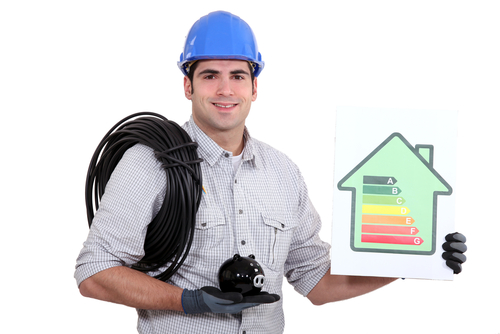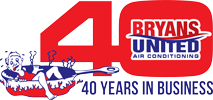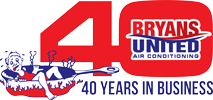 While it does take time, energy and some money to improve your home’s energy efficiency, you’ll achieve greater comfort and lower energy bills as a result. Home energy audits provide the easiest way to get started because these audits show you precisely where energy losses and waste occur, and how extensive they are.
While it does take time, energy and some money to improve your home’s energy efficiency, you’ll achieve greater comfort and lower energy bills as a result. Home energy audits provide the easiest way to get started because these audits show you precisely where energy losses and waste occur, and how extensive they are.
An energy audit is usually performed by a licensed home performance evaluator or an HVAC company. They use specialized equipment and tools to evaluate your home for air leaks and thermal losses. Air leaks allow outside air to infiltrate indoors or conditioned inside air to escape. Thermal losses are the result of heat moving inside or out. Heat naturally seeks cooler temperatures, and without adequate insulation, it seeps into and out of your home continuously.
Detecting Air Leaks
The cornerstone of an energy audit is the blower door test. This piece of equipment has a powerful fan that fits inside an exterior door frame. It has air pressure gauges that measure the air pressure indoors. After the auditing team readies your home, they turn on the fan, which pulls the air out of your home. This results in outside air rushing back inside via various gaps and cracks in the exterior shell – windows, roof, walls, etc. The auditors time how long it takes to return your home to its original air pressure to determine the amount of air infiltration.
A tight home will regain pressure less quickly, while one with a lot of air leakage will return to its regular pressure much faster. During the blower door test, a thermographic scanner will show the auditors exactly where the leaks are located. These devices reveal the differences in temperatures between the incoming air and interior temperatures.
When to Schedule an Energy Audit
The best times of year to have energy audits performed are when there’s a 20 degree F difference between the air outside and indoors. If you have the audit performed during more comfortable weather, the auditors may ask you to thermal load your home to create a more significant difference so that they can measure the air losses more easily. Thermal loading your home involves turning the temperature up or down enough to create a contrasting temperature with the outdoors.
Top Places to Find Air Leaks in Your Home
Likely places for air leaks include:
- Window and exterior door frames
- Places where pipes, vents and wires enter or leave your home
- Along the ceiling plate
- Areas around foundations or crawl spaces
- Places in the attic where flues, chimneys or vent pipes exit
- Recessed lights protruding into the attic
Sealing most of these leaks is fairly easy with caulk, expanding foam, weatherstripping or metal flashing, depending on the type and size of leak. If you have leaks around exposed wires, flues or chimneys, you may want to consult a professional, since excessive heat can build, damaging your home.
Detecting Heat Loss in Your Home
The same thermographic devices that pinpoint air leaks will reveal where your home is gaining or losing heat. The devices, either digital still or video cameras, can be used on the outside and inside of your home to show where insulation levels are inadequate or window glass transfers heat.
Attic and wall insulation slow thermal losses, but over time, insulation can compress or degrade, or it could have been inadequately installed during construction. Unless you have high-efficiency windows, a fair amount of heat passes through the glass, which has extremely low resistance to heat transfer.
When energy audits turn up window problems, if your budget allows, replacing them with thermal or Energy Star rated windows will cut thermal losses. Closing window coverings will also help, as long as the coverings sit close to the glass and cover the frame entirely. Other options for this climate are shade screens installed outdoors to stop the heat from entering through the glass and reflective solar window film.
Appliance Inspection
An HVAC system that’s older or that needs maintenance or has ductwork leaks will drive up energy costs. A poorly insulated water heater also wastes energy from standby heat loss that can be reduced by wrapping the appliance with an insulating blanket or jacket. Newer water heaters usually come pre-insulated.
The pros at Bryans United Air Conditioning can give you more information about the value of energy audits. We provide HVAC and energy auditing services for homeowners in the greater New Orleans area.
Written by Zach Mouton
Image Provided by Shutterstock.com

